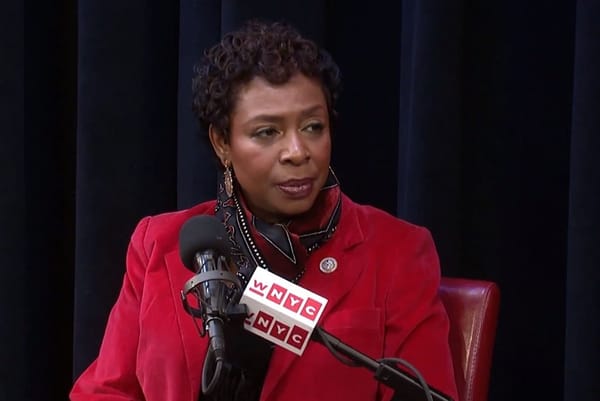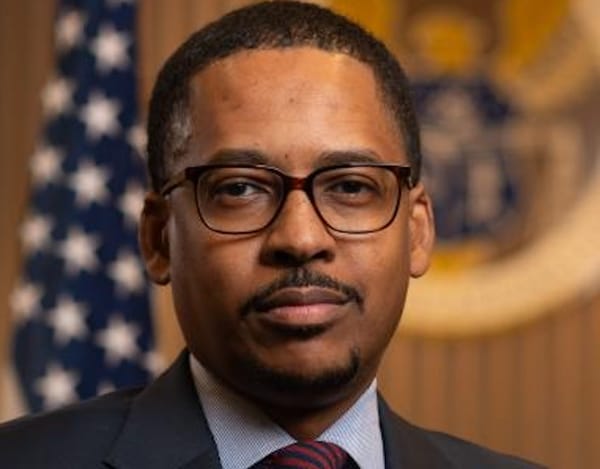Samantha Schartman-Cycyk: Three Keys to Building Transformative Broadband Plans
‘While the federal government’s infrastructure funding creates unique opportunities, it also exposes challenges that states and tribes must get in front of to ensure that funding is sustainable and implementation is effective.’

This week, I am thrilled to join state, local and tribal leaders from across the U.S. as we convene in Cleveland, Ohio, for the Broadband Access Summit. As a local and long-time advocate for digital inclusion, I am proud that the Pew Charitable Trusts and Next Century Cities selected Cleveland, one of the least connected cities in the country, as the site for a timely conversation about how we can effectively spend the unprecedented levels of federal funding for broadband infrastructure.
While the federal government’s infrastructure funding creates unique opportunities, it also exposes challenges that states and tribes must get in front of to ensure that funding is sustainable and implementation is effective.
The good news is that digital equity is finally front and center—where it belongs—and it has taken nearly twenty years of advocacy and practice to get us to this point.
Following are three key lessons I have learned to ensure efforts to expand connectivity are community oriented and sustainable.
1. Bring in local leadership—now
Across the country, areas that have a dedicated local leadership responsible solely for digital equity and inclusion are outpacing their counterparts. Someone, or ideally a team, needs to wake up every day thinking about what digital equity means in their community, how to make a reality in a way that supports key priorities, and where the true needs are. We have seen benefits in cities such as Detroit and Seattle, who have taken this approach.
We must support these leaders with accurate data. At the Marconi Society, a nonprofit that champions digital equity, I helped launch the National Broadband Mapping Coalition to help leaders from rural communities and urban ‘digital deserts’ identify broadband gaps. The NBMC has developed a no-cost mapping toolkit to help educate and guide communities.
2. Plan for sustainability while you have strong funding
We need to anchor digital inclusion efforts to long-term state programs to solidify funding and reinforce the intersectional impact of digital inclusion. Typically, digital inclusion programs blossom within the period of investment but falter when funding runs out, only to peak again when new grants or federal money become available.
This process wastes resources, relationships, and time, resulting in stop-and-start programs that aren’t able to address residents’ needs nor build momentum.
For example, a state like Maine with an older rural population is likely to prioritize services that allow for aging in place and telemedicine care for seniors. States like Utah or Texas, with relatively young populations, might place a higher priority on education and K–12 STEM pipelines. This alignment will allow state leaders to prioritize and bake sustainability into their broadband plans, create digital equity programs that support their priorities, and incorporate data collection into their work.
3. Create the workforce your state will need
In order to implement strong broadband plans that create true digital equity, state and local governments need a pipeline of people who understand the unique intersection of technology, policy, and grassroots digital inclusion work needed to bridge the digital divide. As of last year, nearly 20 states did not even have a dedicated broadband office to begin this work. With funding already being dispersed to states, we are at a critical moment.
To help create this workforce, the Marconi Society conceptualized and is developing the first-ever “Digital Inclusion Leadership” professional certificate with Arizona State University. The program will launch in Fall 2022 and will include top-ranked professors and leading industry experts as teachers and advisors.
I believe that this interdisciplinary workforce will continue to be in high demand as states integrate digital equity into their long-term priorities.
After years of helping to lay the groundwork for the current burst of funding and activity around digital equity, I can say that our work has only just begun. We have the gift of beginning with knowledge and funding that can be truly transformative. The digitally equitable future we are fighting for is closer than it has ever been before—let’s make sure we get this right.
Samantha Schartman-Cycyk is President of the Marconi Society, a nonprofit organization dedicated to advancing digitally equitable communities by empowering change agents across sectors. Over her 20-year career, she has built forward-thinking programs and tools to drive impact on digital inclusion at the local and national levels, through projects with the National Telecommunications and Information Administration (NTIA), community training, and data collecting efforts. The Marconi Society celebrates and supports visionaries building tomorrow’s technologies upon the foundation of a connected world we helped create. This piece is exclusive to Broadband Breakfast.
Broadband Breakfast accepts commentary from informed observers of the broadband scene. Please send pieces to commentary@breakfast.media. The views expressed in Expert Opinion pieces do not necessarily reflect the views of Broadband Breakfast and Breakfast Media LLC.








